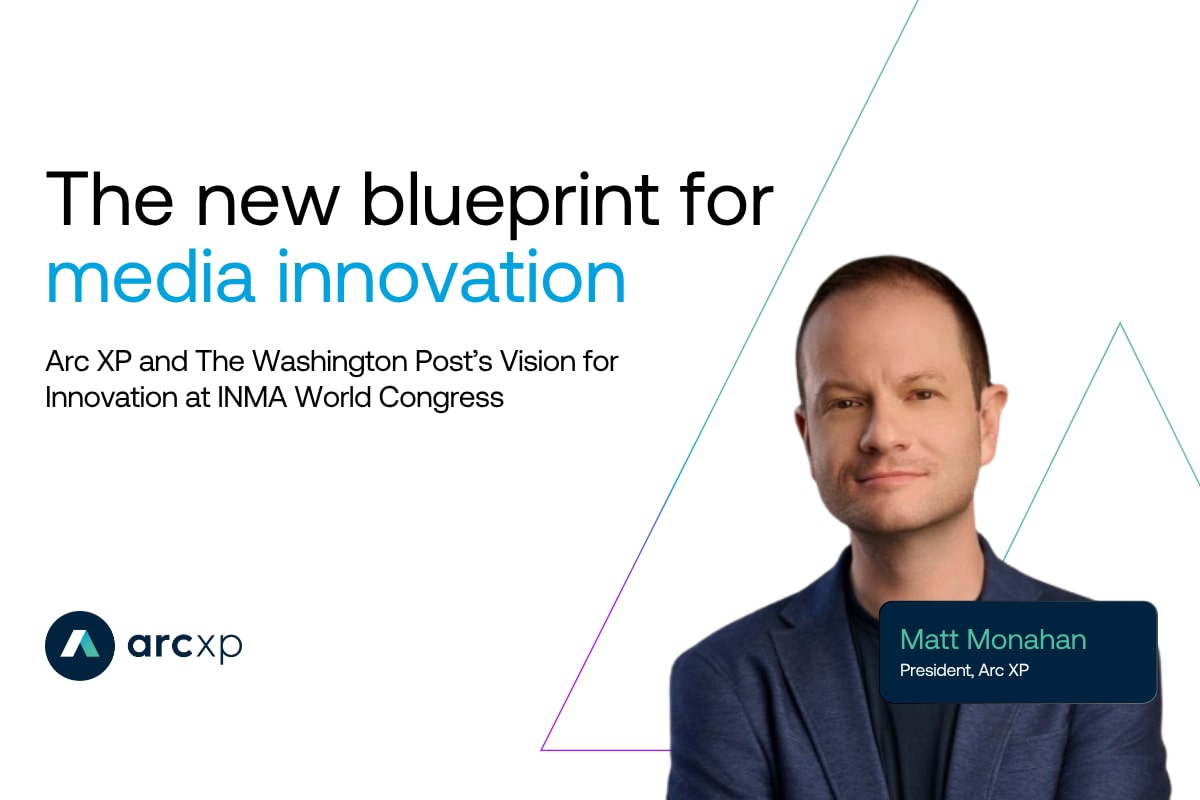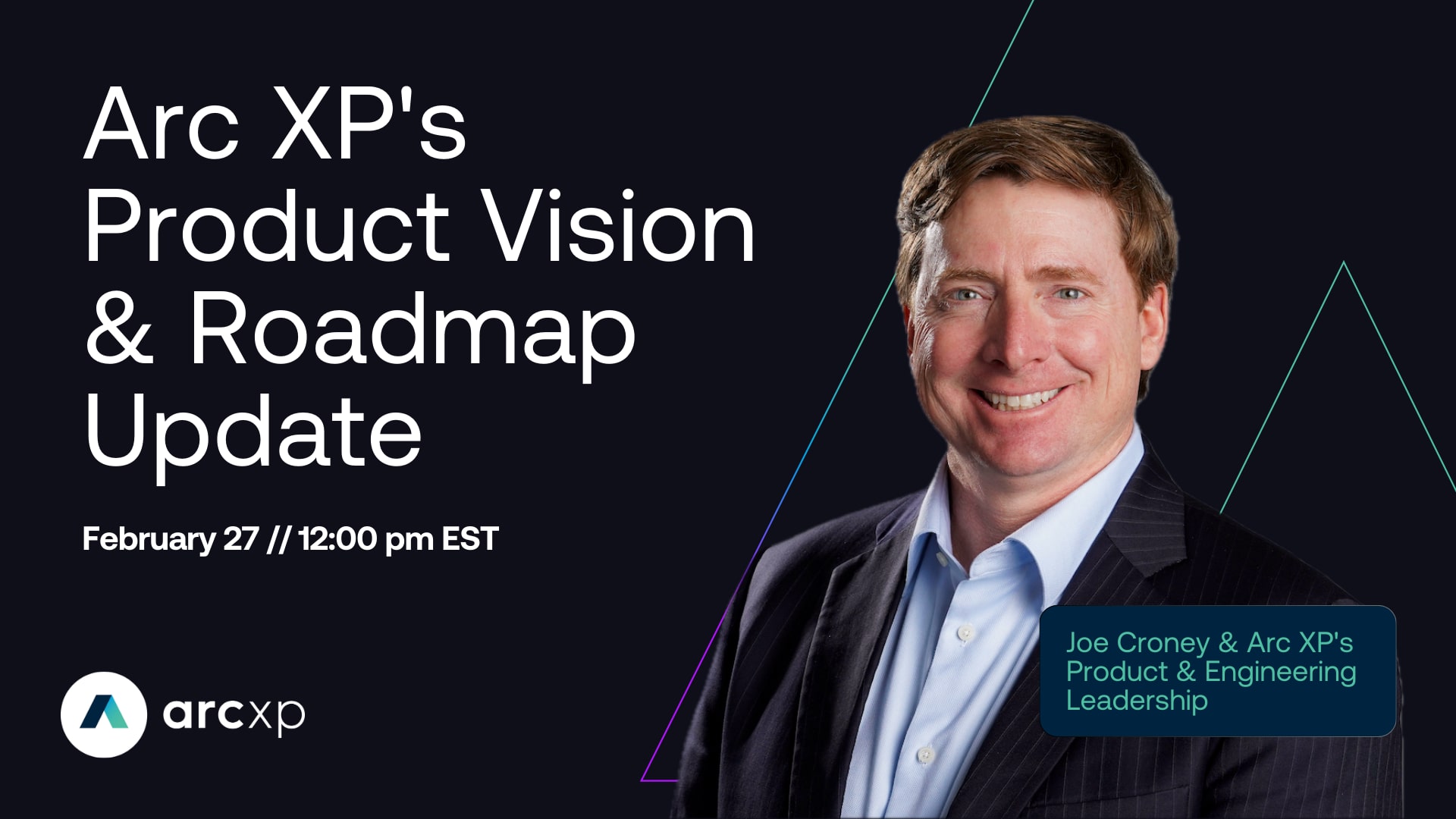Navigating acquisition and retention in a crowded digital subscription space
From the pandemic’s impact to third-party cookie deprecation, what publishers need to know to navigate the challenges and opportunities in an increasingly competitive digital news subscription space.
What tactics can publishers use to acquire digital subscribers in a crowded subscriptions space? How can they retain subscribers increasingly looking to trim their total subscriptions?
These are the questions we sought to answer when we partnered with Digiday to create The publisher’s guide to digital subscriber acquisition and retention.
For the report, we sat down with Ryan Gladstone, group product manager for Arc XP’s Arc Commerce, Arc Subscriptions, and Integration Framework products. Read on for more from Gladstone’s interview which covers the pandemic’s impact on digital subscriptions, third-party cookie deprecation, and how Arc XP is helping publishers react to the new opportunities and challenges.
COVID-19′s impact on digital subscription growth
Ryan Gladstone: Over the past 18 months there has been a significant uptick in digital subscription spending, driven by both changing consumer behaviors and relentless news cycles.
As these trend lines start showing signs of flattening, it is critical that publishers optimize subscriber acquisition strategies while also managing existing subscriber churn in order to continue momentum.
There’s little chance that today’s strategy is perfect. Before publishers focus on tactics or tools, they first need to internally create a culture of curiosity, and in doing so, align their teams around identifying areas of improvement, developing hypotheses, and creating a framework to test those hypotheses.
This said, one development we’ve seen come out of this growth surge that I’m excited to watch is this new, more iterative mindset to finding new audiences – an increased speed of innovation, desire to test new strategies and deploy new creative… really taking a stronger ‘test and learn’ approach.
Retaining pandemic-era subscribers
RG: For many publishers, the demand for up-to-the-minute information on the pandemic and other coinciding world events was the catalyst for subscription growth. Now, as attention and news cycles continue to shift, it’s critical that publishers strengthen their subscription value beyond the initial acquisition catalyst. Really, this goes for all subscribers, regardless of when the subscription is obtained.
Subscribers join because they know a publisher has great content in a particular area, but to keep them, publishers need to get them to recognize, utilize, and appreciate the full range of content the publisher offers. Subscribers who are aware early on they aren’t getting a perceived value that’s worth more than the price of the subscription will cancel quickly, typically within the first 90 days. This means that publishers need to not only diversify subscribers’ content engagement but work to make consumption a frequent habit, if not part of the subscriber’s daily life.
That’s from the active churn angle. On the other side of the coin is passive churn where customers aren’t proactively cancelling but lose their subscription as the result of declined payment. Publishers must make sure they have the right tools and tactics in place to avoid falling victim to these passive cancellations.
On both of these fronts, we continue to make significant investments, in both customer service tools and in recovery and retention products, to ensure our digital subscription platform, Arc Subscriptions, provides customers the best capabilities to drive retention and reduce churn. This includes two of our most recent integrations – Subscribe with Google and Vindicia.
Our Subscribe with Google integration supports a frictionless, subscriber-centered experience for acquisition and retention. Users with an existing Google account can use that account and payment on file to setup a new subscription with partner publishers in just two or three taps - or clicks. Then, as they engage with their Google News feed or use Google’s search engine, relevant articles and content from their subscriptions are prominently surfaced for instant access, reinforcing their subscription’s value and increasing engagement.
The Vindicia integration was implemented to help our customers reduce passive churn by supporting lapsed subscription recovery. This partnership came as the result of strong recommendations from several clients who have seen great returns on the accounts sent to Vindicia for recovery.
I’ll say too, that our pace of development and investment isn’t slowing down. As we look to continue, our roadmaps are developed to ensure our customers have the tools they need to deliver the right touchpoints and marketing hooks to reach their users, engage them and deliver the most value for their subscriptions.
Navigating the impending third-party cookie deprecation
RG: In this emerging post-third-party cookie world, publishers have to dramatically grow the size of their known and authenticated audience for the sake of both their advertising and subscription businesses.
To start, publishers need to pull engaged, but anonymous, readers into a registered state. The key here is for publishers to make sure they’re providing a low-friction account creation experience.
It used to be that the focus was on immediately getting readers into the subscription checkout funnel, but in this new world, it’s proving to be more important to instead focus on getting them into a logged-in state.
In doing so, publishers can then manage the paywall budget while also getting to know users, establish a relationship, and engage them through different channels (especially email).
Lowering the registration requirements to, say, just providing an email address, is a key step towards increasing registered users. Increasingly, we’re seeing customers doing this as part of a progressive registration strategy. Then as the reader interacts with the publisher’s various properties, they provide more information about themselves that the publisher can then use to tailor content and products to the reader’s interests.
With that foundation in place, several of our clients have had great success leveraging a customer data platform (CDP) such as our partner BlueConic’s, to build robust first-party data profiles that are then used to generate audience segments. With our BlueConic integration, those segments are brought into Arc XP where publishers then use them to inform free content metering and when to present the paywall, as well as what pricing and/or promotion might be most compelling to that audience.
Delivering a great subscriber experience
RG: There are so many facets to delivering a great subscriber experience, I’m going to touch on just a few of them here.
First off, as previously mentioned, is the importance of ensuring a subscriber is aware of all the benefits available to them. They may have subscribed based on one or two touchpoints or types of content, but the publisher may have another three or four that are going to be relevant.
Having a well-thought-out new subscriber campaign that incrementally introduces available benefits plays a key role in creating subscriber value. What form that campaign takes – through email, the onsite experience, or both – will vary by publisher. And you can’t just set your campaign and forget it. While many publishers today have an email welcome campaign, they also acknowledge that there is room for improvement, specifically the need for continued testing and revisiting each campaign piece to optimize accordingly.
Another facet of delivering a great subscriber experience is to make sure that subscriber access is as seamless as possible. Consider all the different places where a reader may encounter a publisher’s content – their site or mobile app, Apple News, Twitter, etc. Each touchpoint carries its own login and password. Publishers can reduce the friction of these individualized logins with one-time access links and social sign-ons available with each social platform where their content is available. These features can go a long way in cultivating engaged subscribers.
The third aspect I’m going to touch on is for publishers to make sure they offer subscription options that are relevant to their audience. For example, a reader buys a digital premium subscription with the rights to share it with their family and access to the e-edition but comes to realize that they’re really only using a portion of the access rights, or that their family isn’t using the subscription like they’d thought. Instead of cancelling, they may just want to downgrade to a subscription in line with their actual usage. This is an opportunity that publishers don’t want to miss simply by not offering options that align with their subscribers’ needs. For our part, this is an area we’ve made a lot of investment in to ensure publishers have the tools needed to offer subscriber self-service capabilities around switching subscription products.
While technology and marketing play a role at some level, subscription growth really relies on the strength of the publisher’s journalism.
There is so much choice for consumers when it comes to how they spend their time, and their attention is fought for on so many different fronts. More important than anything is for publishers to invest in great original content with a unique voice that stands out. This is what not only attracts users and subscribers but keeps them coming back time and again. Here at Arc XP, we’re delivering a platform that makes the technology and subscriber experience side easy so our publishers can focus on what they do best – creating compelling journalism.
For more on navigating the present challenges and opportunities of digital subscriber acquisition and retention, download The publisher’s guide to digital subscriber acquisition and retention.
Recent resources





